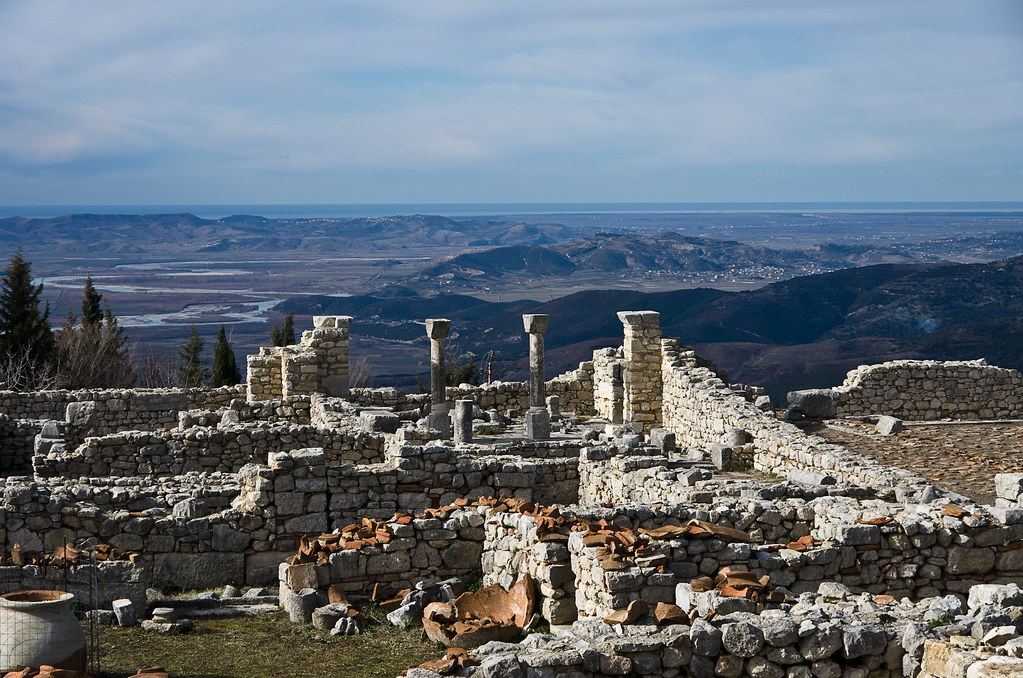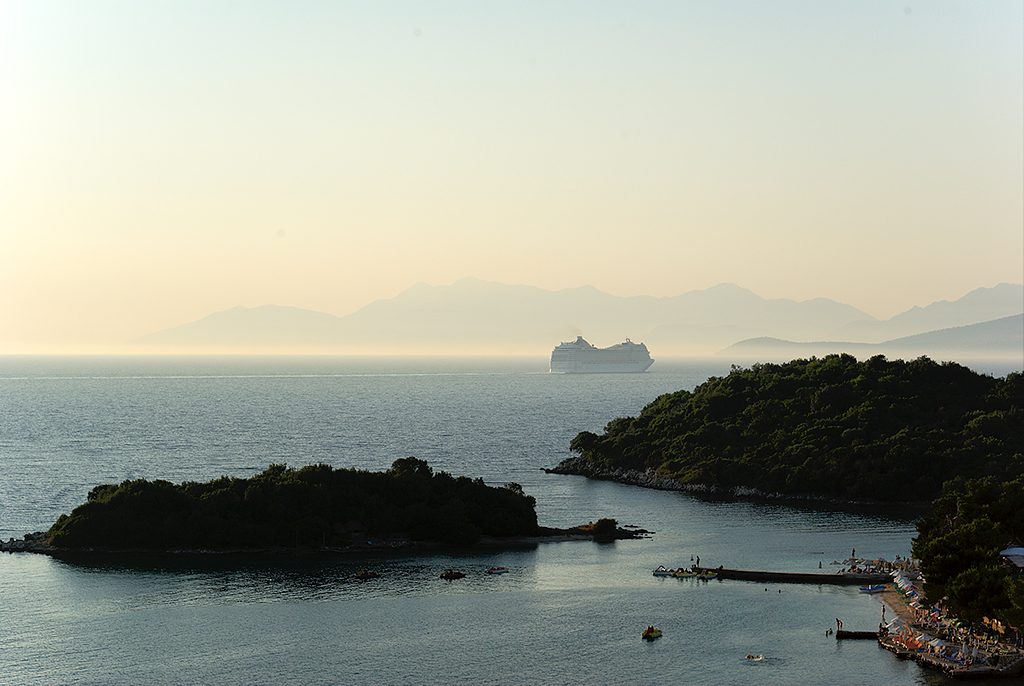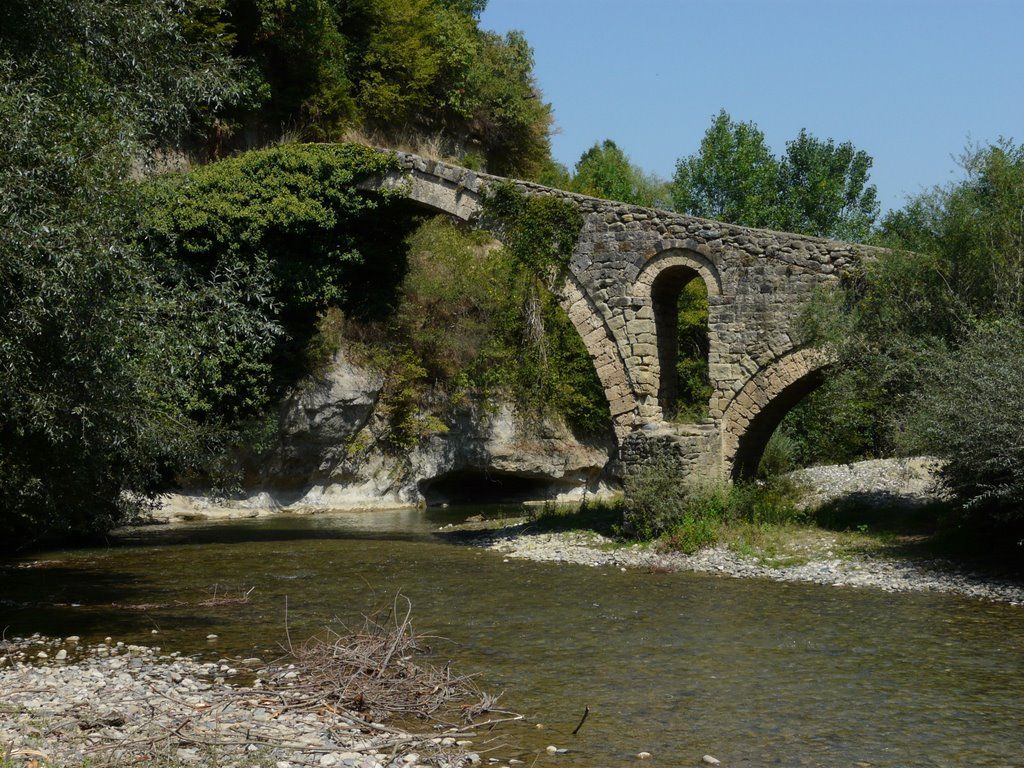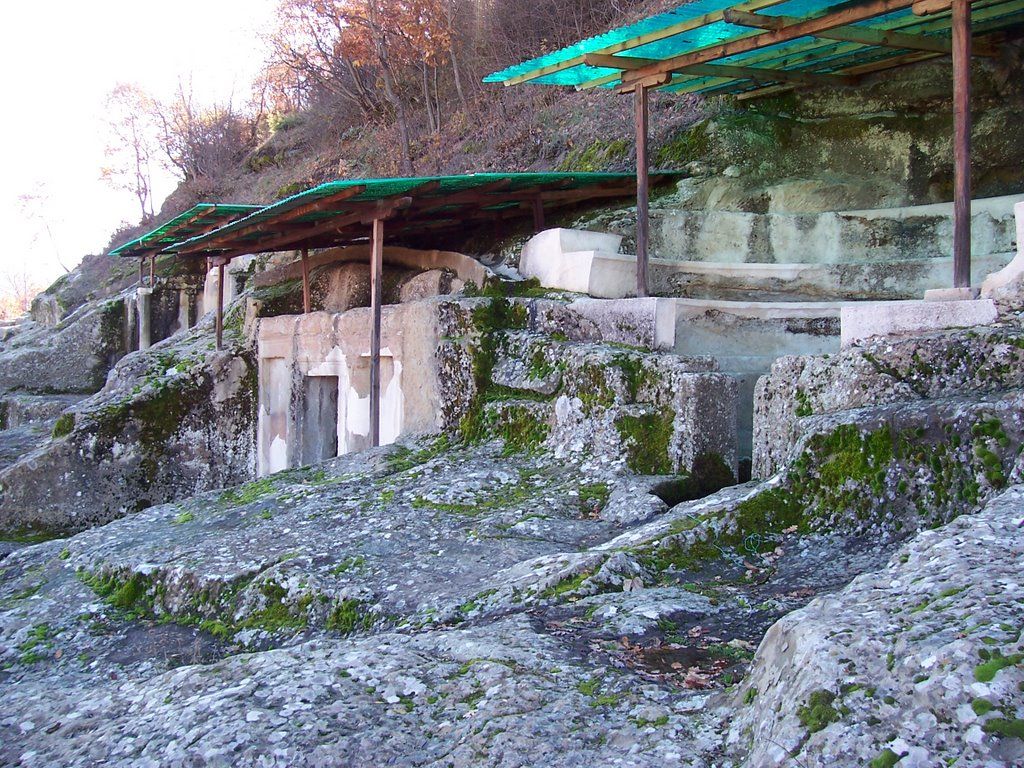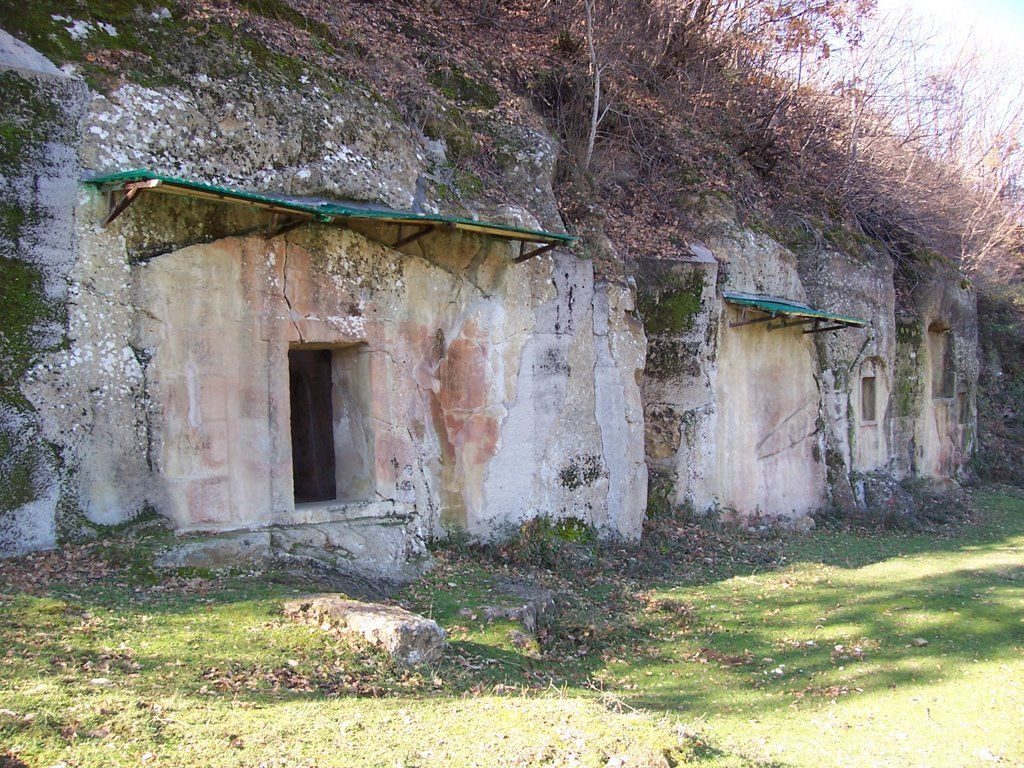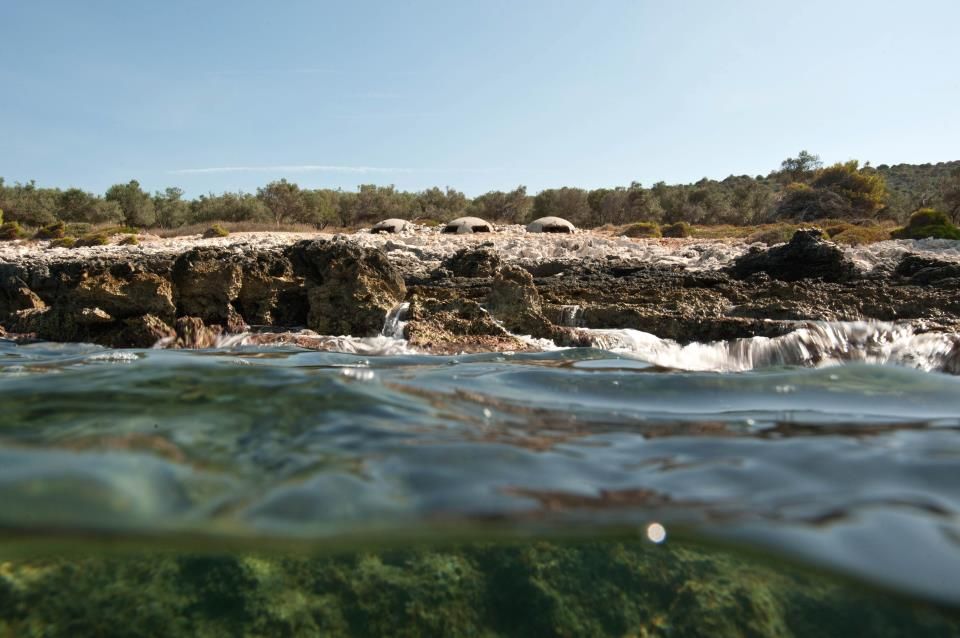Install the app
How to install the app on iOS
Follow along with the video below to see how to install our site as a web app on your home screen.

Note: This feature currently requires accessing the site using the built-in Safari browser.
You are using an out of date browser. It may not display this or other websites correctly.
You should upgrade or use an alternative browser.
You should upgrade or use an alternative browser.
Discover Albania
- Thread starter King Bardhyl
- Start date
LABERIA
Banned
- Messages
- 1,969
- Reaction score
- 293
- Points
- 83
- Ethnic group
- Albanian
Publikuar në 6 shk 2017
Subscribe to TopAlbania here:
https://www.youtube.com/c/TopAlbania?...
-----
ALBANIA Go Your Own Way - Visit Albania
The Albanian Riviera is blessed with 300 days of sun. The average temperature in January is 10 degrees C. and the average temperature in July is 25 degrees C.
The Ionian coastline is known for having fascinating beaches with deep and very clean waters. Younger crowds tend to visit the Ionian beaches as the area offers many opportunities for those interested in water sports like diving, boat tours, etc.
Some of the most exotic and interesting beaches in the south of Albania are Dhërmi, Jal, Himara, Qeparo, Borsh, Saranda and Ksamil.
From the Llogara Pass, which is 1,057 meters above sea level, the breathtaking coast can be seen as if from the vantage point of an airplane.
The first beach here is Dhraleos in Palasë which has a length of 1.5 km. This is one of the most exotic and tranquil beaches of the Albanian coastal zone complete with rich blue waters. This beach is popular for water sports and is sometimes even the destination for the parachutes that launch from Llogara Pass.
Dhërmi is located a little further south and is one of the most frequented and important tourist places along the Albanian coast. The crystal-clear waters, isolated beaches, water sports and diving make this the preferred beach of younger generation. The different beaches that are part of Dhërmi are Jaliksari, Shkambo and Gjipea.The beach of Gjipea has a beautiful shape. Past this beach there is a stream that has made a canyon with 70 meters high walls. Located near the beach of Dhërmi is the Cave of Pirates which tourists can access only by boat or ferry. There are also hotels, restaurants and summer clubs located nearby.
Throughout this entire area, family tourism has developed, where tourists can choose to rent guesthouses or reside in a variety of hotels nearby. Near Himara 8 km south of Dhërmi, you will find the village of Vuno, which is the central area of the Albanian Riviera. It is a tourist town that comes to life during the summer season thanks to the younger generations that come here.
In this area are beaches of Spile, Potam, Llamaniand and Livadhja. All of them stand out for their deep waters, navigability and rocky characteristics. After Borsh is Qeparo and the small tectonic gulf of Porto Palermo where Ali Pasha castle is located.
Borsh, is one of the longer beach areas of the Albanian Riviera protected by a collection of massive Mediterranean vegetation, primarily citrus and olive plantations. Family tourism has also become very popular in this area. Between here and the city of Saranda, one can find the beaches of Bunec, Kakome and Krokëy whose collective length runs about three km and each with beautiful, crystal-clear water.
The city of Saranda is the most populous urban area on the Albanian Riviera and a very big tourist destination, especially enjoyed by newly married couples on their honeymoon. The city and surrounding areas offer a range of hotels catering to five-star travelers as well as the more budget conscious, while home rentals also remain an option. The city is well-located on the coast only 9 km away from the Greek island of Corfu. Daily ferries offer connections between Saranda and Corfu making this southern Albanian city a good base for European and international tourists.
Along Saranda you will find some smaller beaches like Central and Liman. Usually, tourists prefer to visit one of the more frequented places, Ksamil, which is located between the peninsula of Ksamil and lagoon of Butrint hosting a number of hotels and restaurants, near the beach of Ksamil are 4 small islands covered by Mediterranean vegetation with a surface of 8.9 ha.
-Video by: http://www.albania.al Visit Albania
-Music by:Kuarteti Pentagram,recorded at Purovox Records
https://www.youtube.com/channel/UCvXl...
(1-Valsi i Lumturise 2-Moj e Bukura More 3-Kur Dielli Perendon)
-Edited (inMovieMaker) by me (TopAlbania)
https://www.youtube.com/channel/UCrwE...
LABERIA
Banned
- Messages
- 1,969
- Reaction score
- 293
- Points
- 83
- Ethnic group
- Albanian
Publikuar në 21 pri 2017
ALBANIA Go Your Own Way, Visit Albania
Karavasta Lagoon (Albanian: Laguna e Karavastasë) is the largest lagoon in Albania and one of the largest in the Adriatic Sea. It is separated from the Adriatic Sea by a large strip of sand. The lagoon is part of the Divjaka-Karavasta National Park. It was chosen as an area of international importance, protected by the Ramsar Convention of 29 November 1995.
The lagoon is situated in the west of Albania and near the city of Divjaka. The lagoon is cut off from the Adriatic Sea by a long sandy bar. The Karavasta lagoon has a lot of pine trees and small sandy islands.
The lagoon is famous for the rare Dalmatian pelican which nests there: In fact 6.4% of the Europe's population of this type of pelican is found in this lagoon.They build the nests in the only island of Pelican in this lagoon.
The Karavasta Lagoon is within the List of Ramsar wetlands of international importance and is part of the Divjake-Karavasta National Park. Inside the park's boundary are found a number of restaurants with the most famous Divjaka Fish a restaurant in forest, well known for variety of fish, vegetable cooked .
Since disinfection campaigns have long been halted, the area is known to have a very active mosquito season. However, in 2014, disinfection campaigns have started and a park rehabilitation project has been initiated by the national authorities. It included a hunting moratorium which revived bird-watching activities.
source:https://en.wikipedia.org/wiki/Karavas...
video: http://albania.al/
music: Valsi i Lumturise - Kuarteti Pentagram
https://www.youtube.com/watch?v=6LraG...
edited by: TopAlbania
https://www.youtube.com/c/topalbania
https://facebook.com/TopAlbania1
LABERIA
Banned
- Messages
- 1,969
- Reaction score
- 293
- Points
- 83
- Ethnic group
- Albanian
Publikuar në 8 shk 2017
Subscribe to TopAlbania here:
https://www.youtube.com/c/TopAlbania?...
ALBANIA Go Your Own Way - Visit Albania
ALBANIAN ALPS - A Fairy Tale Jurney
The flagship region for mountain tourism is the Albanian Alps, the National Parks of Thethi,Valbona and the Region of Kelmendi.The "Accursed Mountains" are both truly spectacular and virtually impenetrable except for a series of high passes that link the small number of farmsteads and homes in the valleys bellow to the outside world during the summer months.
The Valbona River Valley lies in the eastern part of the Albanian Alps.
A national park of 8,000 hectares, it is one of the most beautiful natural areas in Albania. The park lies about 22km from the alpine city of Bajram Curri. Before entering the valley you will find the spring of Shoshan, located only 3km away from Bajram Curri.
This spring rushes through limestone fissures on its way to the Valbona River creating an attractive canyon 2-3 wide and 50m deep. After entering the valley, you will pass several picturesque villages. The first, with alpine style houses, is called Dragobia, and it is where the valley narrows. Past Dragobia, at the foot of the mountain where the Cerremi stream joins the Valbona River, is the famous cave where the national hero Bajram Curri was besieged and killed. It was after this event that the city took his name.
Valbona is located 25km away from the city of Bajram Curri and is the most important inhabited center of the valley. It is full of traditional houses that create a picturesque view in symmetry with the natural wonders of the valley, which widens again at this point. In Selimaj, there is a comfortable and traditional hotel, or you may have the opportunity to stay at a village home, for the inhabitants’ generosity and hospitality are well known.The road continues through the valley among marvelous views of nature with rich colors of both springtime and of the snow that covers the peaks of the craggy mountains.
The final village before you arrive at the source of the Valbona River is Rrogam.Rrogam is a remote village surrounded by virgin and intact nature. The entire valley is resplendent with rare colors and beauty. On one side, you see the crystal clear waters of the Valbona, and on the other the sharp but verdant mountain edges. Up until May you can enjoy the contrast of the clean white snow on the treetops against the blue sky. The rest consists of beech woods, arnen, walnuts, chestnuts, and wild apple trees. There are also many forest fruits such as blueberries and strawberries.
The animals in the park include bears, wolves, wild cats, and even herds of wild goats climbing on the rocks. In the river can be found marble trout, a rare fish found in the crystal-clear waters of the Valbona with a special and exquisite taste. The valley, the park, and all the surroundings are known for heavy snowfall, which starts in early November and lasts almost until May. The average amount of snow in this region during the year is 100cm.
There are many outdoor activities in the national park, such as skiing, mountain climbing, fishing, excursions and trekking throughout the valley and streams , and canoeing along certain parts of the river. Valbona may also serve as a starting point if you wish to climb the Jezerca Mountain, the second highest mountain in Albania.
Another interesting spot of the Western Alps is Vermoshi, part of the northern-most mountains of the country, located 95km from Shkodra in the region of Kelmendi (from the Roman word “Clemens,” meaning gentle, simple, and good). The first thing to catch the eye along the journey is Qafa e Rrapshit, where you can see the crystal-clear waters of the Cemi River creating a beautiful contrast with the surrounding landscape.
During summer, the ponds of the river are perfect for sunbathing and many visitors stop to lounge in the sun and enjoy themselves. Vermoshi stands in an alpine field 1,100m above sea level surrounded by high slopes. You can entertain yourself by trekking, mountain climbing, skiing, or fishing for mountain trout. The locals pride themselves that their cuisine is only truly enjoyable for visitors when accented by their own dairy products, so be sure to indulge. The full journey among the people of this Albanian region will give you not only the chance to live between a mythical atmosphere and the contemporary world, but will also let you enjoy the renowned hospitality mentioned by almost every foreigner who has been fortunate enough to visit.An alpine tour of Albania isn’t complete without a stop in the famed Western Alps. Here you will enjoy the unique opportunity to walk, breath, sleep, and eat amidst the legends dating from Homer and through modern tales of our majestic mystery and intrigue. This tour gives you the rare chance to enjoy the heart of the Albanian Alps, Gropa e Thethit.
For more:http://albania.al/destination/20/alpet/
LABERIA
Banned
- Messages
- 1,969
- Reaction score
- 293
- Points
- 83
- Ethnic group
- Albanian
Publikuar në 11 mar 2017
Thethi - ALBANIA Go Your Own Way
Located 70 km from Shkodra, you must pass Qafa e Tërthores at 2,000 m before descending to Gropa e Thethit by crossing a stream bearing the same name. It is a journey you’ll want to have your camera ready for, full of extended mountain views, with water cascading down craggy hillsides and trees reaching for sunlight on rocky slopes. The area is rich in sights such as the waterfall of Grunas, 30 m high, the amazing cold-water sources of Okol, and the caves of Birrat me Rrathë (Round Holes) and Mount Arapi. In the park people often amuse themselves by hiking, mountain climbing, skiing (especially on the eastern slope), fishing, even mountain biking and spelunking. Almost 90% of the park area is covered by beech trees, providing shade for many different types of flowers such as the Wulfenia baldacci, discovered by the Italian botanist Baldacci. Fascinatingly, this flower is found only in Theth. The fauna is just as rich as the flora, distinguished by the famed golden eagle and rreqebull (lynx). In the waters of Theth’s stream, marble trout make their home. While in Theth you can stay in local guesthouses designed to display traditional alpine architecture. The characteristic dish of the area is fërlik (rotisserie) or you can sample one of large varieties of local trout. If time permits, many travelers enjoy a short excursion to the Shala Valley which brings them close to the heart of the Albanian Alps.
source: http://albania.al/tour/5/back_in_time/
LABERIA
Banned
- Messages
- 1,969
- Reaction score
- 293
- Points
- 83
- Ethnic group
- Albanian
Publikuar në 17 qer 2017
Viroit Cave, Gjirokastër Albania
Albania is incredibly interesting country. Good weather, nice people, beautiful scenery and untouched caves with very clean water.
Video: Diving Center Anaconda - Poland
http://www.anaconda.biz.pl
Readers! Do You Read di Chris Zabriskie è un brano autorizzato da Creative Commons Attribution (https://creativecommons.org/licenses/...)
Fonte: http://chriszabriskie.com/reappear/
Artista: http://chriszabriskie.com/
Invariance di Kevin MacLeod è un brano autorizzato da Creative Commons Attribution (https://creativecommons.org/licenses/...)
Fonte: http://incompetech.com/music/royalty-...
Artista: http://incompetech.com/
LABERIA
Banned
- Messages
- 1,969
- Reaction score
- 293
- Points
- 83
- Ethnic group
- Albanian
Publikuar në 23 mar 2017
ALBANIA Go Your Own Way - Visit Albania 2017
Kelmendi (Albanian: Kelmendi) is a historical tribe and region (Kelmendi mountains, Malet e Kelmendit) in the mountainous borderlands of Albania towards Montenegro, of the wider Malësia-region. Part of the region lies within the Kelmend municipality, and is composed of a Roman Catholic majority and Muslim minority. The Kelmendi speak a subdialect of Gheg Albanian as the other northern Albanian tribes.
Families hailing from Kelmendi can also be found in Plav, Montenegro, Kraja, Montenegro and Rugova, Kosovo[a], where they are Muslim. The name is derived from Saint Clement, the patron saint of the region.
Video: http://albania.al/
Music: Kuarteti Pentagram - Baresha
https://www.youtube.com/watch?v=GTLw_...
Edited by: TopAlbania (Youtube Channel)
LABERIA
Banned
- Messages
- 1,969
- Reaction score
- 293
- Points
- 83
- Ethnic group
- Albanian
Publikuar në 12 shk 2017
ALBANIA Go Your Own Way - for more visit: http://www.albania.al
Visit Albania 2017-The spectacular attraction of Albania
The Osumi Canyon is a river canyon in southern Albania, near the town of Çorovoda. The river, which passes through the town of Berat, flows through the canyon. There are many underground passages and unexplored caves throughout the length of the canyon.
During the spring, high water from melting snow makes it possible to explore the whole length of the canyon from the river. The rapids are Class II, so one does not need prior white water experience to navigate them. At the end of the summer, when the water is lower, the full length of the canyon is not navigable, but there are various walks with opportunities for swimming in various pools and streams.
The edges of the canyon have an unusual ecosystem that preserves the greenery on both sides of the canyon year-round. Mediterranean bushes like heath and briar flourish along with rich flora and fauna. On the slopes of the canyon, erosion has created pockmarked cavern walls with small caves. Some of the rock formations in the canyon have fanciful names such as the Cathedral, the Eye, and the Demon’s Door. The canyons are 26 km (16 miles) long, at an altitude of 450 m. They are thought to have been formed 2-3 million years ago by water erosion.
Langarica Canyon is located 200m from the thermal springs on both sides of the river of the same name. Starting from a height of 30 m and a width of 2 m at least reduce the level of the sea canyon deepened to 150 m and extends up to 10-12 meters, becoming one of the most unusual and mysterious places in strane.Eti canyons long ago attracted the attention of both local and foreign scientists.
Langarica River originates near the village Kamennik (Kamenik) in Kolonja District. Here are joined two streams Shales and Barmash. At the beginning of the valley is narrow and deep, as it runs through the limestone rocks, but as we go along starts to expand, forming a rift 80-100 m depth. That's - tough majestically keeps it its power for several kilometers. The width of the river bed where more rarely 1.5-2 m.
Video by: http://www.albania.al
Edited by: TopAlbania https://www.youtube.com/channel/UCrwE...
Music by:
Syn Cole - Feel Good [NCS Release]
https://www.youtube.com/watch?v=q1ULJ...
https://soundcloud.com/syncole
LABERIA
Banned
- Messages
- 1,969
- Reaction score
- 293
- Points
- 83
- Ethnic group
- Albanian
Publikuar në 5 mar 2013
www.albrafting.org
Osumi Canyons
Osumi Canyons are 26 km long, and 450m above the sea level. It is believed that they have
been formed 2-3 million years ago due to water erosion dipping in to the earth. Through all of their
straits, a lot of underground passages and unexplored caves can be found.
It is generally believed that these canyons have substituted ancient passages over Corrovoda's river, given that
through time the ceilings of these passages were destroyed and gave way to the various shapes of the nowadays canyons. Osumi Canyons are the largest in
Albania, and, according to many prestigious geographical studies, among the largest in Europe. The canyons have a marvelous ecosystem that can preserve itself very well. We can mention Mediterranean bushes like heath, briar and different kinds of fish as permanent features of this ecosystem.
In the slopes of the canyons, erosive activity has created a rock
chain, one of the rarest found in Albanian.
In Osumi Canyons are 6 straits with the canyons width ranging from 1.5m wide in its riverbed up to
35m wide up in the slopes. Within the canyons you will find beautiful spots that have exotic names like "The Cathedral", "The Eye", and "Demon's Gate". The erosion through years has
given to the canyons, the appearance of an edifice of a natural cult, which can give you a magic
impression since the first glance.
The view they offer when you see the canyons from above is really breathtaking but the experience when
you're actually having a walk or rafting is even better.
Albanian whitewater experience
Although a small country, Albania is home to a large number of impressive rivers. The network
of inland Albanian waters consists of eleven major rivers and their 150 tributaries. Measuring
285 km, the Black Drini River is the longest and it flows from Lake Ohrid to the Adriatic Sea. The
Buna River played over several centuries a crucial role for the economic development of Albania's
north and the port of Shkodra at Lake Shkodra. Other large rivers include the Shkumbini, Vjosa,
Osumi and Devolli. Some valleys, canyons and waterfalls created by these ancient flows offer
tremendous natural beauties. Among these are the Valbona and Shala Valleys in the Albanian Alps
with the Grunas Waterfall in Thethi, the Tomorica Valley and Osumi Canyons near the City-Museum of Berat, and the Këlcyra Outfall on the Vjosa River near Permet in the southern Albania. Albania
Rafting Group organizes rafting trips in Albania through sustainable tourism principles and activities
to protect biodiversity and nature. Difficulty levels of the rafting tracks are classified Wild Water II
and III (running water with small waves) and are feasible by people with normal physical conditions
and some sense of adventure. Come to experience our rafting trips and find marvelous places in
Albania you could not discover otherwise!
LABERIA
Banned
- Messages
- 1,969
- Reaction score
- 293
- Points
- 83
- Ethnic group
- Albanian
Publikuar në 28 qer 2017
Visit Albania
Video: Wander Albania
Korça, The City of Serenada
Korça is the city where the largest carnival in Albania is organized, taking place before Orthodox Easter.
Korça is one of the largest and most important cultural and economic centers of Albania, located in the southeastern part of the country.
The city is known for its typical quarters, composed of low houses and villas, which are paved with cobblestone. The city of Korça has a range of museums such as the Education Museum (located in the building where the first Albanian school opened in 1887), the National Museum of Medieval Art, the Prehistoric Museum, the house-museum of the famous landscape painter, Vangjush Mio, the museum of the Oriental Art “Bratko”, etc. In the vicinity of the city is the cemetery of French soldiers killed during the First World War.
Apart from the museums and monuments, Korça is the city where the largest carnival in Albania is organized, taking place before Orthodox Easter. Musically, the city is known for the local songs, called serenata. In the city you will find many taverns with tasteful traditional cooking such as various types of pie which perfectly combines with the good music and the traditional drink, raki.
Korça is a very good base for exploring many tourist points located in the nearby mountains such as Voskopoja, Dardha, Vithkuqi and Boboshtica. These villages are well known for offering the possibility to practice many outdoor sports and activities. The area is also famous for the Byzantine churches of Vithkuqi and Voskpoja, whose walls were painted by famous medieval Albanian painters. Close to Korça you can visit Prespa Lake (which is the country’s largest National Park), Drenova National Park, the Neolithic tombs of Kamenica, etc.
Music: Disco Lounge di Kevin MacLeod (https://creativecommons.org/licenses/...)
Fonte: http://incompetech.com/music/royalty-...
Artista: http://incompetech.com/
LABERIA
Banned
- Messages
- 1,969
- Reaction score
- 293
- Points
- 83
- Ethnic group
- Albanian
Publikuar në 25 qer 2017
AGE ART PRODUCTION
https://www.facebook.com/ageartproduc...
Interpretoi: Shkëlzen Doli
Orkestroi: Shkëlzen Doli
Video: Kujustudio
-Me mbështetjen e Ministrisë së Kulturës
SHKËLZEN DOLI - VIOLIN
Member of the Vienna Philharmonic and former student of legendary Russian violin teacher Ewgenia Chugaeva, Shkëlzen Doli finds himself in the unique position of a musician who is capable of combining both the virtuosity of the Russian violin school and the unique style and sound of this world famous Viennese orchestra.
Born in Albania and raised in an artistic environment in Kosovo of former Yugoslavia he made his first musical experiences as a young boy playing traditional Albanian folk music. His outstanding talent was discovered by professional music teachers who invited him to study at the renowned “Music Academy of Novi Sad”, at the time one of the best violin schools in Yugoslavia. At the age of 17 he won 1st prize in the National Yugoslavian Competition for Young Musicians. Under the guidance of Prof. Ewgenia Chugaeva Shkëlzen Doli built the foundation of his musicianship based on the discipline and virtuosity of the famous Russian Violin School. Leaving Novi Sad he followed his teacher to Vienna’s University of Music. Vienna quickly became his new artistic home where not only his exceptional dexterity on the instrument got highly appreciated but also his specific knowledge of autochthon music of the Balkans and the Eastern Mediterranean. Playing in the Vienna Philharmonic and the Orchestra of the Vienna State Opera sensitized the young musician for their distinctive interpretation of classical and romantic composers and has shaped his musical taste ever since. In addition to numerous solo-appearances he has performed with renowned chamber music ensembles of the Vienna Philharmonic such as “Wiener Virtuosen”, “Toyota Master Players”, “The Philharmonics” and the contemporary music “Ensemble Wiener Collage” and has toured Europe, North America, Africa, Israel and Japan. In 2013 Shkëlzen Doli founded his own chamber music group; the piano quartet based “Philharmonisches Ensemble – Wien” (“Philharmonic Ensemble – Vienna”).
This thread has been viewed 83788 times.

